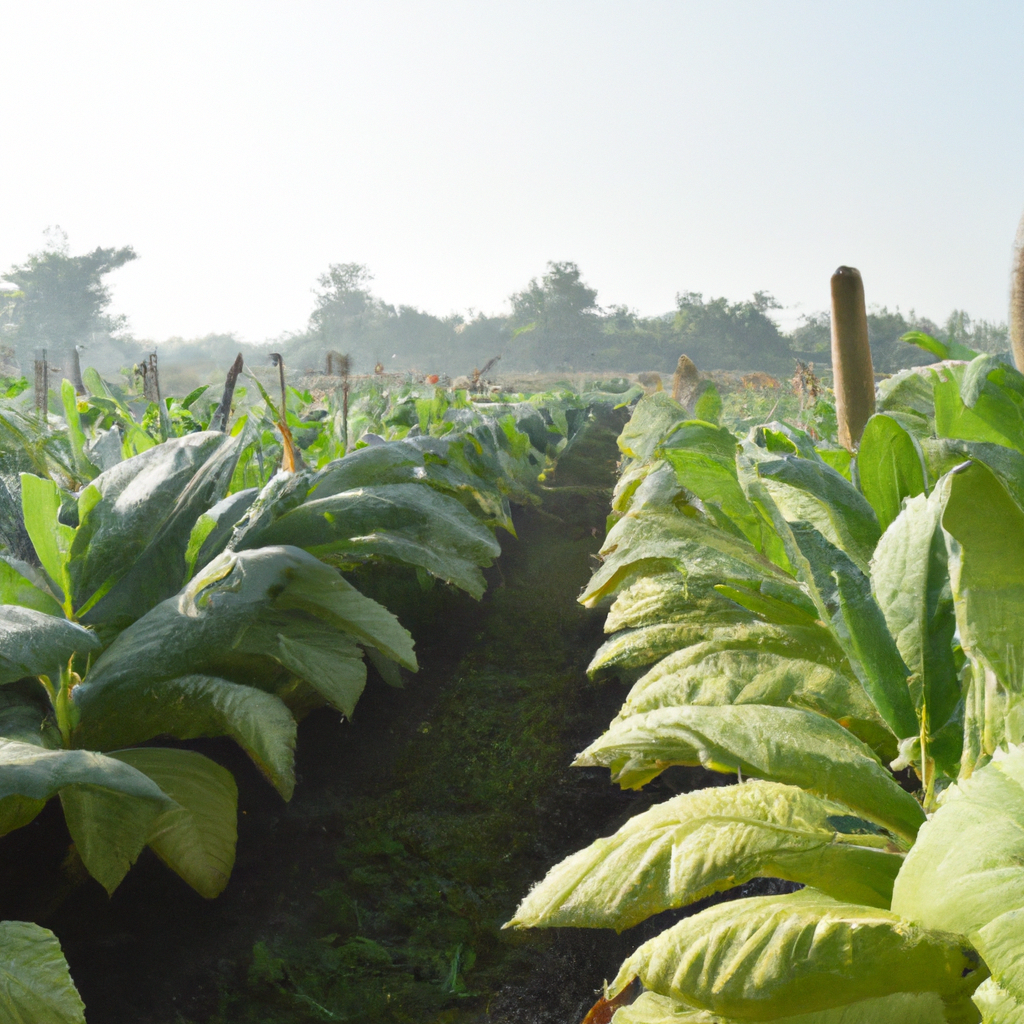From Seedlings to Cigars: A Hobbyist’s Journey into Growing Tobacco Plants
Growing tobacco plants can be a fascinating and rewarding experience for hobbyists and those interested in the art of cigar-making.
Growing tobacco plants can be a fascinating and rewarding experience for hobbyists and those interested in the art of cigar-making. For those looking to embark on this journey, there are many aspects to consider, from selecting the right tobacco variety to preparing the soil and caring for the plants. As a hobbyist and someone interested in the cigar-making process, I was curious about growing tobacco plants myself. In fact, a friend of mine who is a cigar enthusiast is working on starting their own brand of cigars and suggested that I try growing tobacco plants. This piqued my interest, and I decided to dive into the world of tobacco cultivation.
The time it takes for a tobacco plant to grow can vary depending on several factors, such as the variety of tobacco, growing conditions, and intended use of the plant. Generally, tobacco plants take about 60 to 90 days from the time of planting until they are mature enough to be harvested.
Tobacco is an annual plant, which means that it completes its life cycle within one growing season. Once harvested, the tobacco plant will not regrow, and a new crop must be planted each year. However, some tobacco farmers may choose to grow multiple crops in a year by planting new batches of tobacco at different times throughout the growing season.
Tobacco seeds can be obtained from various sources, including online retailers, local garden centers, or tobacco suppliers. Here are a few places where you can buy tobacco seeds:
- Online seed retailers: There are several online retailers that specialize in selling tobacco seeds. You can search for them on your preferred search engine and compare prices and seed varieties. I got my tobacco seeds from Etsy Shop funnyfoodguy, who is an amazing seller and obviously cares about their customers
- Local garden centers: Some local garden centers may carry tobacco seeds, especially those that cater to customers interested in growing unusual or exotic plants. Check with your local garden center to see if they carry tobacco seeds.
- Tobacco suppliers: Some tobacco suppliers also sell tobacco seeds. These suppliers may cater to commercial tobacco farmers or hobbyists interested in growing tobacco plants. You can find tobacco suppliers online or through local agricultural organizations.
When purchasing tobacco seeds, make sure to choose a reputable supplier and select seeds that are fresh and have a high germination rate. Additionally, it’s important to check local regulations and laws regarding tobacco cultivation before buying or growing tobacco seeds.
To seed tobacco plants, you will need to follow a few steps to ensure successful germination and healthy growth of the seedlings. Here’s a narrative of the process:
- Choose your seeds: There are many varieties of tobacco seeds available in the market. Choose the variety that best suits your needs and growing conditions. Ensure that the seeds are fresh and have a high germination rate.
- Prepare the seedbed: Select a location that has good sunlight and fertile soil. Prepare the seedbed by removing any weeds, rocks, or debris. Break up the soil to a fine texture and level the surface.
- Sow the seeds: Sow the tobacco seeds thinly and evenly over the surface of the seedbed. You can use a seed spreader or scatter them by hand. Cover the seeds with a light layer of fine soil or vermiculite, which will help to retain moisture and protect the seeds from direct sunlight.
- Water the seedbed: Use a gentle shower setting on your watering can or hose to water the seedbed thoroughly. Be careful not to wash away the seeds. Keep the soil moist but not waterlogged. You may need to water the seedbed daily or more frequently, depending on the weather conditions.
- Provide proper care: Once the seeds have germinated, it’s important to provide proper care to the seedlings. Thin out the seedlings if they are overcrowded, leaving only the strongest and healthiest plants. Fertilize the seedlings with a balanced fertilizer once they have grown to about 3-4 inches tall. Gradually acclimate the seedlings to the outdoor environment by exposing them to sunlight and wind for a few hours each day.
- Transplant the seedlings: After 4-6 weeks of growth, the tobacco seedlings should be ready for transplanting. Choose a location with good sunlight and well-drained soil. Dig small holes about 6-8 inches apart and transplant the seedlings carefully, being careful not to damage the roots. Water the newly transplanted seedlings immediately after planting.
When it comes to transplanting tobacco seedlings into the field, the size of the seedling is an essential factor to consider. Generally, tobacco seedlings should be around 6-8 inches tall, with at least 6 to 8 leaves before transplanting.
It usually takes about 4-6 weeks from the time of sowing the tobacco seeds for the seedlings to reach this size. However, this can vary depending on the growing conditions and the specific variety of tobacco being grown.
It’s important to ensure that the tobacco seedlings are strong and healthy before transplanting them to the field. You should also make sure that the soil is moist but not waterlogged and that the temperatures are suitable for the tobacco plant’s growth before transplanting.
The time it takes for a tobacco plant to grow can vary depending on several factors, such as the variety of tobacco, growing conditions, and intended use of the plant. Generally, tobacco plants take about 60 to 90 days from the time of planting until they are mature enough to be harvested.
Tobacco is an annual plant, which means that it completes its life cycle within one growing season. Once harvested, the tobacco plant will not regrow, and a new crop must be planted each year. However, some tobacco farmers may choose to grow multiple crops in a year by planting new batches of tobacco at different times throughout the growing season.







